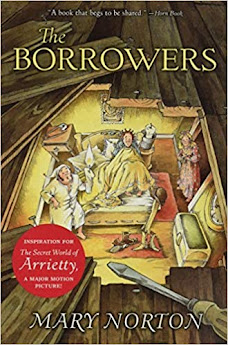The Borrowers
When I was very young, I expected all books to take their time getting started. I would read the opening ten or so pages without really minding that they were boring, because I knew that once I’d made my way through them, the real story would get started. It was the price I expected to pay as a reader.
(Not one boy I knew at school. He started every book he read on page 10. He would simply skip the opening pages and he did it, he said, because they were always boring and he didn’t see the point in wasting his time. And this was someone who read for pleasure, not because it was a book we were reading in class.)The point of this preamble? The Borrowers fits this pattern perfectly. I found the opening chapters a real slog and was seriously considering setting it aside because it didn't seem as though the story would ever get going. Yet when it did, I was hooked. All of a sudden there was tension. Would the borrowers escape from the villains? What was going to happen next? Once the story pulled me in, I could see why the book has become the classic it is.
But that slow first third seems – now, almost 70 years after it was first published – so terribly old-fashioned. It doesn’t fit our shorter attention spans, our being accustomed to every story racing away from the first page. Back in 1953, a writer could take their time setting up characters and backgrounds. Nobody complained – except perhaps my Start-on-page-10 classmate.
I wonder whether it could get published today? Or whether an editor would be composing lengthy emails arguing for extensive cuts. Would it even get the chance to become a classic?



Comments
Post a Comment